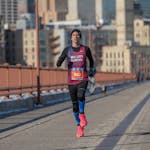Last summer, for the very first time, the traveling public was allowed to roll a fully operable bicycle onto Amtrak's Empire Builder, and then roll it back off when the train reached their destination.
Before that, Amtrak was uncomfortable with the idea of bikes on the Empire Builder, and most of its other routes. The railroad would accept bikes, yes, but only after they had been partly dissembled, boxed up, and taped shut — like hazardous parcels that required segregation in the baggage car.
These new rules (which only affect staffed stations, by the way) are another hesitant step in the continuing integration of bicycles into the nation's everyday traveling and commuting life — integration in ways that are opening all kinds of possibilities for travel and exploration: Say, going on vacation to Chicago or Seattle, and not having to rent a car when you get there; or joining friends on the overnight westbound Empire Builder from St. Paul to, maybe, Grand Forks, N.D., and riding home on a grand summer bike tour.
Or, a little-known, singular cycling treat: the Empire Builder stops at West Glacier, at the entrance to Glacier National Park. In the spring — right now, actually — much of the park's main road, the Going-to-the-Sun Highway, is closed to traffic until its high point on Logan Pass is cleared of snow. In the meantime, the U.S. Park Service allows people on bikes to explore the glorious park by themselves, car- and RV-free. Sometimes it's July before they get Logan Pass open.
The beauty of using trains with bikes is that they create new rides. The easiest example is Metro Transit's Northstar Line, which runs 40-something miles between Target Field and Big Lake in Sherburne County, with intermediate stops that include Anoka, Ramsey and Elk River.
The schedules are mainly timed, naturally, to get commuters into and out of Minneapolis during rush hours. But on a summer weekends, it is possible to catch a mid-to-late morning train from Target Field (52 minutes to Big Lake) and make an afternoon of it riding home. On Saturdays, Metro Transit runs a southbound train from Big Lake after 5 p.m., which creates a possibility of riding north to one of its stations and catching a train home.
But the real question and opportunity is: What's the riding route to or from the Northstar? The obvious option is the state's Mississippi River Trail — aka U.S. Bike Route 45 — which runs generally in the vicinity of the river from Lake Itasca, through the Twin Cities to Iowa. It is closely accessible to many of the Northstar's stations.
However, the river trail is a "bike route," an often aspirational designation that includes some bike lanes and paths, but also more than equal measures of shoulderless roads, busy streets and random neighborhoods. A ride on the river trail this spring from Target Field to Elk River had its rewards, but these are not the route's most scenic miles. The river itself is a rare sight, and the neighborhoods tend toward the gritty and industrial and the blandly suburban. Signage, necessary for a complex, meandering route, was significant but hardly comprehensive. Turns aren't always marked; doubling back is part of the experience. Maps from the Department of Transportation's website can be a help — somewhat.
The more bucolic and cruise-ready routes to or from the Northstar are to the south of the river, probably connecting to either the Luce Line or the Dakota Rail Regional Trail, either of which connect to the metro area's network of paths and lanes. From Elk River, cross the Mississippi on Hwy. 42 and pick your way on rural roads south about 25 miles to the Luce on the north side of Lake Minnetonka. From Big Lake, cross the river at Monticello and make your way south about 35 miles to Mayer in Carver County, hang a left on the Dakota Rail Trail, and head home.
And unlike Amtrak, the Northstar allows everyone to roll a bike onto or off at any station.
Bike notes
An update: In April, an authoritative European study reported that — uh-oh — self-driving cars and trucks don't see bikes, and that eventually bikes will have to somehow "communicate" with autonomous vehicles. In May, many of the big names in the bike business, including Quality Bicycle Products of Bloomington, announced a coalition to create safety standards for bicycle-to-vehicle communication — so-called B2V technology.
What possibly could go wrong?
Tony Brown is a freelance writer from Minneapolis. Reach him at mplsbikeguy@gmail.com.





